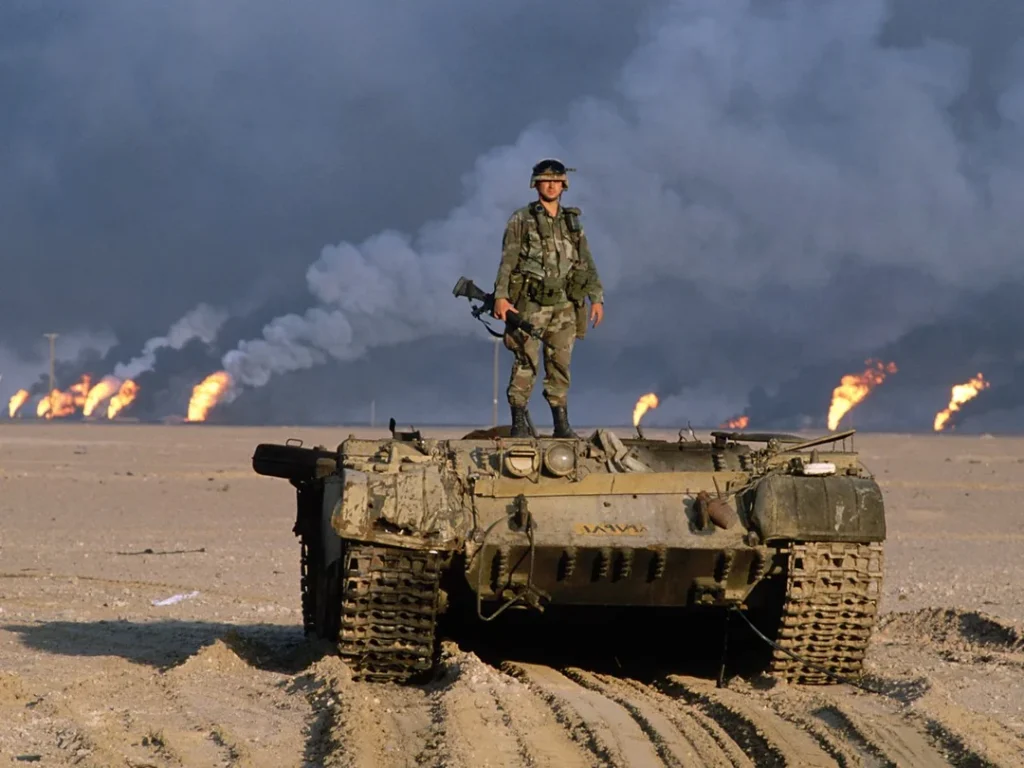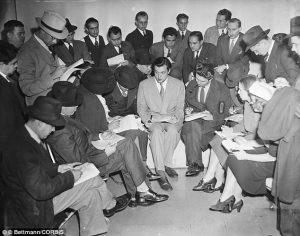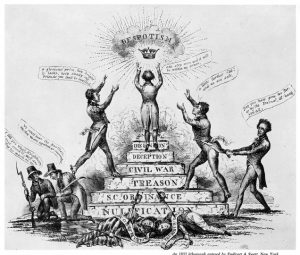The Battle of 73 Easting, fought on February 26, 1991 during Operation Desert Storm, remains one of the most remarkable and decisive tank engagements in military history. At the heart of the battle was Captain Herbert Raymond McMaster, commanding Eagle Troop of the 2nd Armored Cavalry Regiment (ACR). His leadership and decision making would play a crucial role in the defeat of the Iraqi Republican Guard’s Tawakalna Division. Captain McMaster’s tactics, combined with the excellent training of his soldiers, proved superior in securing a victory that would come to symbolize the ultimate skills of U.S. forces during the Gulf War.1
To understand the battle, it’s important to know how difficult things were for Captain McMaster and his team. It rained the night before, there was heavy fog in the morning, and then a sandstorm made it even harder to see. This made navigation very challenging. As Captain McMaster later recounted, “We had this new thing called a global positioning system… but we were essentially navigating by dead reckoning.”2
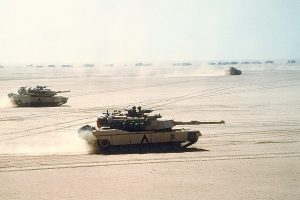
The mission of Eagle Troop was to advance eastward toward the 70 Easting, a key north-south line on the map that would provide a reference for the operation’s movements. The primary goal was to gain intelligence and to scout the area. Captain McMaster was under orders to avoid direct combat, if possible, and to engage only when absolutely necessary. However, combat soon became unavoidable.
As Eagle Troop moved across the vast and empty desert, Captain McMaster’s instincts and training kicked in. At around 16:18 (4:18 PM), as Eagle Troop crested a small dune, Captain McMaster spotted the unmistakable signs of enemy defenses. Through the fog and sandstorm, he identified Iraqi tanks dug into fighting positions. The surprise was palpable: “We had destroyed their scouts earlier in the day and, because of the sandstorm, they had neither seen nor heard us,” Captain McMaster said.3
The decision to strike was immediate. Captain McMaster, understanding that hesitation could lead to defeat, ordered his M1A1 Abrams tanks to open fire. The result was swift: “We suppressed those buildings with tank main gunfire… all nine of our tanks fired simultaneously high-explosive rounds into the barracks area.”4 The surprise attack left the enemy with little time to react, and the advantage quickly shifted to the American forces.

In these early moments, Captain McMaster’s leadership was crucial. His decision-making was shaped by years of tough training that taught him to trust and rely on his junior leaders. “No one had to be told what to do,” Captain McMaster said, recalling how his troops fell into action with instinctive precision.5 This approach showed their belief in mission command, a way of leading that guided everything they did during the battle. His ability to make quick decisions based on what his soldiers saw on the ground and in front of them was crucial.
The initial success didn’t mean the battle was over. Captain McMaster knew the real challenge would come as Eagle Troop moved past the 70 Easting line. While the first victory gave them momentum, it also meant they would have to go off the original plan. “I can’t stop; we’re still in contact,” Captain McMaster recalled saying as he pushed forward, disregarding the set limits of advance.6 His actions highlighted the importance of adapting to the unfolding battle and seizing opportunities as they arose.
Soon after this decision, Eagle Troop encountered an even more formidable force: seventeen Iraqi T-72 tanks arranged in a circular defensive formation. These tanks, part of a reserve force, were unprepared for the ferocity of the American armored troops. Captain McMaster’s orders were clear: engage. The result was overwhelming. In just minutes, all seventeen enemy tanks were destroyed as Captain McMaster’s tanks, supported by Bradley Fighting Vehicles, took out the Iraqi positions one by one.
Despite the overwhelming success, Captain McMaster knew that the battle was far from won. Throughout the engagement, he was keenly aware of the evolving dynamics of the battlefield, especially as his forces went deeper into enemy lines. Eagle Troop’s momentum carried them forward, and the superior firepower of the Abrams tanks allowed them to continue obliterating enemy positions. As Captain McMaster later explained, the Iraqi forces were disoriented, attempting to reposition in the smoke and confusion caused by the initial barrage of tank fire. Captain McMaster, however, kept moving forward, showing how important it was to keep pushing the enemy until they were close to collapsing.

The battle continued to unfold with relentless speed. As Eagle Troop advanced further, they encountered more enemy formations, including infantry and light armored vehicles. The coordination between the Abrams and Bradleys showed in how well they handled the threats. Normally used for reconnaissance and carrying infantry, the Bradleys now helped the tanks by clearing out infantry and lightly armored vehicles. As Captain McMaster recalled, “The Bradleys were able to cut them down as they (Iraqi infantry) came through the smoke.”7
As the day raged on, Captain McMaster’s forces pushed past the 70 Easting and continued their advance toward the 73 Easting, which would become the final objective. Here, Eagle Troop encountered another defensive formation: eighteen Iraqi T-72 tanks arranged in a defensive circle yet again. At close range, around 300 meters, Captain McMaster’s tanks engaged with precision and devastating effect. The engagement was described by Captain McMaster as “like a knife fight, referring to the close-quarters combat between the tanks.”8 The destruction was fast. “I could see the expressions on the individual tank commanders’ faces,” he recounted. The sight of burning tanks and destroyed vehicles left no doubt that the battle was decisively won.
The final phase of the battle saw the Iraqis attempting to regroup. However, Captain McMaster’s refusal to stop the attack and his troops’ relentless momentum left little opportunity for a counterpush. “We just had the jump on them,” Captain McMaster said, noting that halting would have allowed the enemy to recover and come back in the fight. His decision to press on ultimately paid off, as the troops continued to destroy enemy vehicles and infantry, pushing the battle into the late evening.
By the end of the battle, Eagle Troop had destroyed 50 Iraqi tanks, 25 armored vehicles, and several trucks.9 Even though the battle only lasted 23 minutes, it showed how strong the American forces were, especially in speed, firepower, and leadership. Captain McMaster’s focus on leadership, training, and mission command was key to Eagle Troop’s success. “We had trained so often and under such realistic conditions that the training just kicked in,” Captain McMaster later reflected. “It was the training and preparation that made it possible.”10
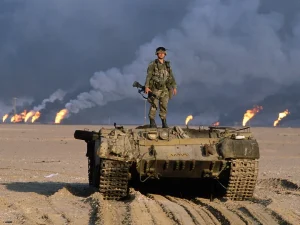
After the battle, the Iraqi defense in that area quickly collapsed. Eagle Troop’s precise actions destroyed one of the Republican Guard’s key defensive positions. This disruption made it almost impossible for the Iraqi forces to regroup or fight back, greatly weakening their ability to stop further attacks. Captain McMaster’s leadership was central to this success. As noted in an article on the impact of the battle, “McMaster’s decision enabled the troops to avoid casualties while using the tanks’ main guns to inflict maximum damage on enemy armor.”11
As the Gulf War came to a close, Captain McMaster’s leadership at the Battle of 73 Easting would be remembered as a primary example of how to lead under pressure. His quick thinking and strong understanding of battle became an example for future military leaders to follow.
In the years after the battle, Captain McMaster often looked back on what he learned. He stressed how important it was to let leaders make decisions on their own, to train like it’s real combat, and to trust the soldiers to do their jobs. “We have to continue the attack, I’m sorry, we can’t stop,” Captain McMaster had said to his executive, reflecting on the key decision that led to Eagle Troop’s victory. “We had the jump on them, so we continued the attack.”12
The Battle of 73 Easting is remembered as a strong example of how fast, flexible, and powerful the U.S. military can be. The fight taught lessons that shaped how the military plans and fights today, showing how important good leaders, strong training, and quick decision-making are in battle.
- Clinton Ancker, “Mission Command at the Battle of 73 Easting,” NCO Journal, U.S. Army University Press, October 19, 2022, https://www.armyupress.army.mil/Journals/NCO-Journal/Archives/2022/October/Mission-Command-at-the-Battle-of-73-Easting/. ↵
- “Lt. General H.R. McMaster (Full Interview),” YouTube video, 11:10, posted by @AmericanVeteransCenter, July 2, 2019, https://www.youtube.com/watch?v=WLlPTb8OgPA. ↵
- “The Battle of 73 Easting,” Mormon Soldier (blog), April 22, 2012, https://mormonsoldier.wordpress.com/2012/04/22/the-battle-of-73-easting/. ↵
- “Lt. General H.R. McMaster (Full Interview),” YouTube video, 12:20, posted by @AmericanVeteransCenter, July 2, 2019, https://www.youtube.com/watch?v=WLlPTb8OgPA. ↵
- “Lt. General H.R. McMaster (Full Interview),” YouTube video, 18:40, posted by @AmericanVeteransCenter, July 2, 2019, https://www.youtube.com/watch?v=WLlPTb8OgPA. ↵
- Jared Keller, “How a Young Captain McMaster Commanded One of the Most Epic Tank Battles in History,” Task & Purpose, September 30, 2022, https://taskandpurpose.com/tech-tactics/young-captain-mcmaster-commanded-one-epic-tank-battles-history/. ↵
- ” Lt. General H.R. McMaster (Full Interview),” YouTube video, 16:10, posted by @AmericanVeteransCenter, July 2, 2019, https://www.youtube.com/watch?v=WLlPTb8OgPA. ↵
- “Lt. General H.R. McMaster (Full Interview),” YouTube video, 17:15, posted by @AmericanVeteransCenter, July 2, 2019, https://www.youtube.com/watch?v=WLlPTb8OgPA. ↵
- Richard Sisk, “McMaster’s Tank Battle in Iraq May Shape Advice in New Role,” Military.com, February 23, 2017, https://www.military.com/daily-news/2017/02/23/mcmasters-tank-battle-in-iraq-may-shape-advice-in-new-role.html. ↵
- ” Lt. General H.R. McMaster (Full Interview),” YouTube video, 19:00, posted by @AmericanVeteransCenter, July 2, 2019, https://www.youtube.com/watch?v=WLlPTb8OgPA. ↵
- Clinton J. Ancker III, Mission Command at the Battle of 73 Easting, NCO Journal, U.S. Army University Press, October 19, 2022, 3, https://www.armyupress.army.mil/Portals/7/nco-journal/images/2022/October/73-Easting/73-Easting.pdf. ↵
- ” Lt. General H.R. McMaster (Full Interview),” YouTube video, 15:15, posted by @AmericanVeteransCenter, July 2, 2019, https://www.youtube.com/watch?v=WLlPTb8OgPA. ↵
